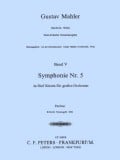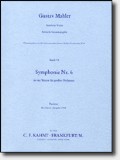
Gustav Mahler
Though during his lifetime Mahler was highly regarded as a conductor who composed, in the century since his death he has become rightly acknowledged as a composer who earned a living by conducting.
Mahler is reputed to have said "the symphony must be like the world. It must embrace everything", and his symphonies certainly rise to this challenge. With the average length of each work standing at well over an hour, Mahler transformed the symphony into an epic journey of psychological discovery, involving the listener like never before in soundworlds of immense depth and vivid colour. In his quest for such varied music, Mahler’s works are littered with theatrical effects such as music played off-stage, and the idiosyncratic use of instruments such as cowbells, rutes, mandolin, guitar, flugelhorn and, famously in the sixth symphony, a giant hammer. Mahler’s orchestras were of a size rarely seen, before or since. In the second symphony for example, the extravagant instrumentation leads to the orchestra containing 10 French horns, 10 trumpets, 4 oboes, 6 timpani, and in addition, by order of the composer: "The largest possible contingent of strings".
While such orchestral overindulgence can put many off, behind this panoply is music of almost unimaginable depth, drama and beauty. To experience classical music on its largest expressive scale, Mahler must be listened to.
Bestselling Titles by Gustav Mahler
-
Publisher: Bote & BockUsually despatched within 7-10 working days - Lead times may vary in the case of supplier shortages or delays$125.72
-
Publisher: Peters EditionUsually despatched within 7-10 working days - Lead times may vary in the case of supplier shortages or delays$116.84
-
-
Publisher: Faber MusicSpecial Order: Usually despatched within 20-30 working days - Lead times may vary in the case of supplier shortages or delays$69.85
-
Publisher: Peters EditionUsually despatched within 7-10 working days - Lead times may vary in the case of supplier shortages or delays$133.35
-
Publisher: Universal EditionSpecial Order: Usually despatched within 10-15 working days - Lead times may vary in the case of supplier shortages or delays$14.61









